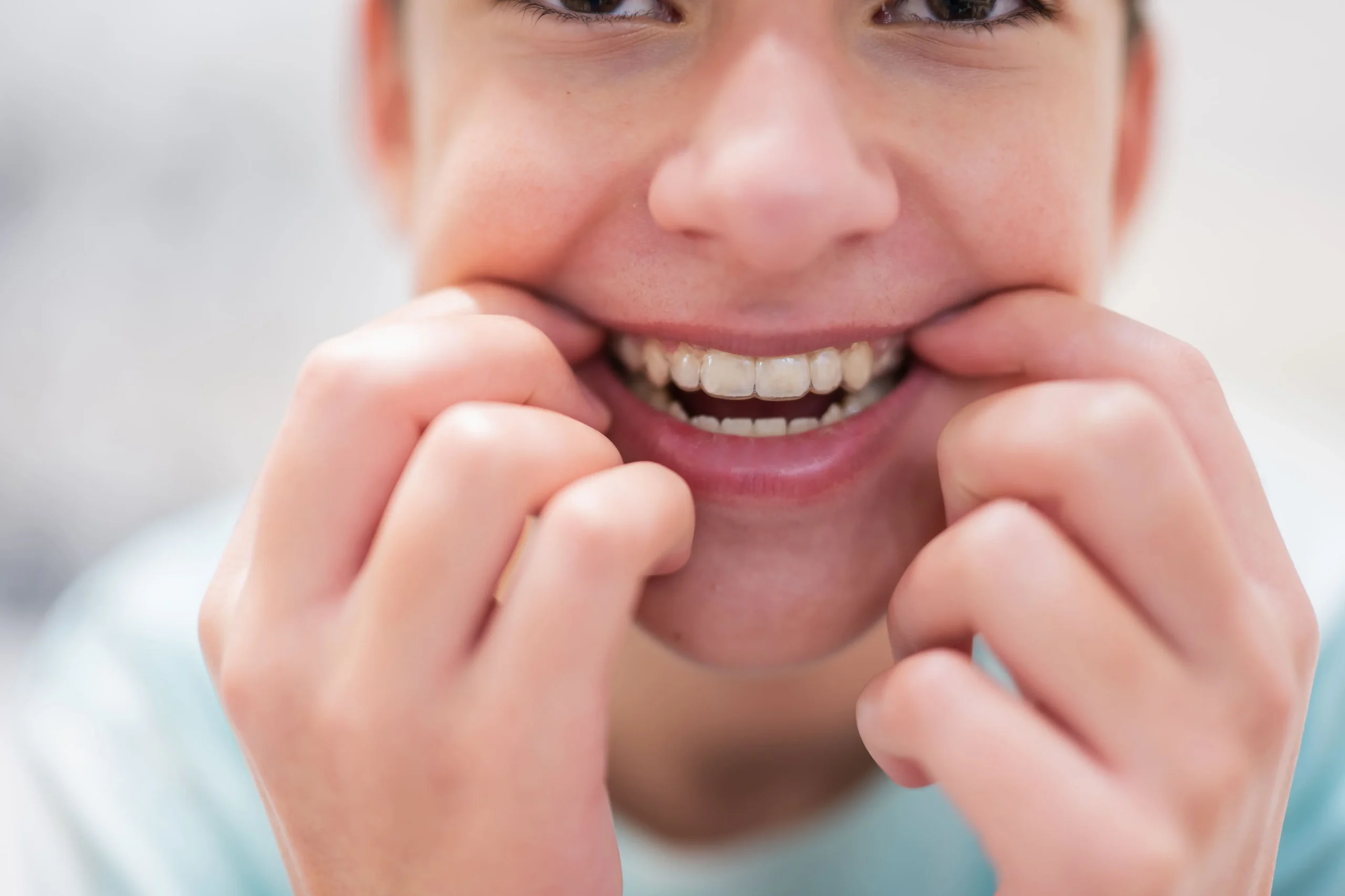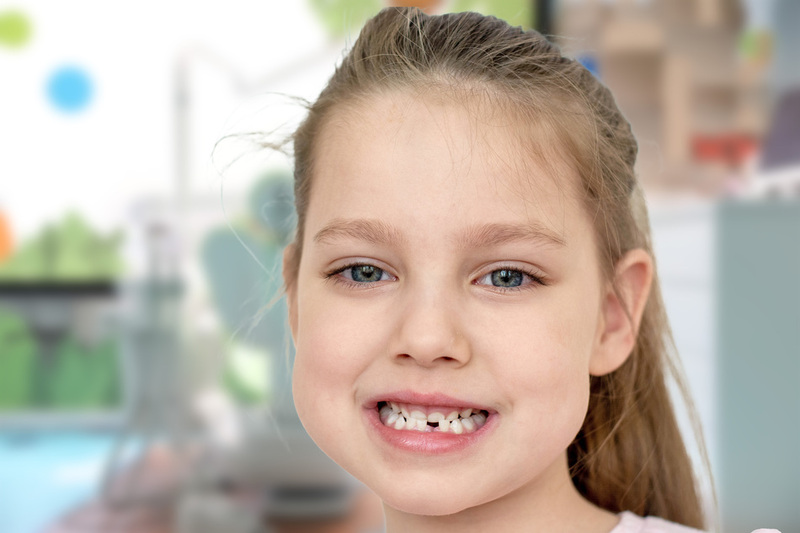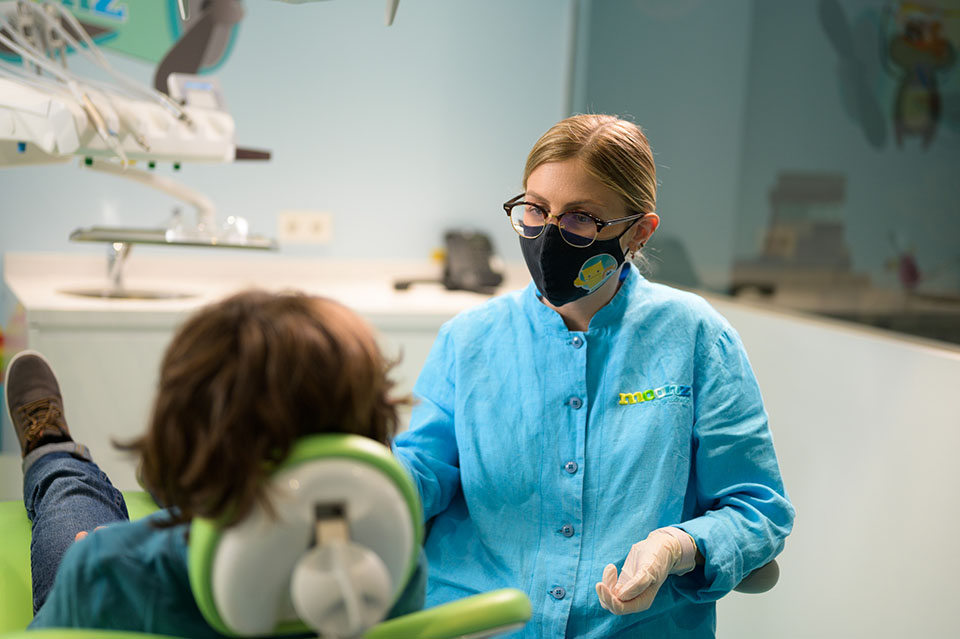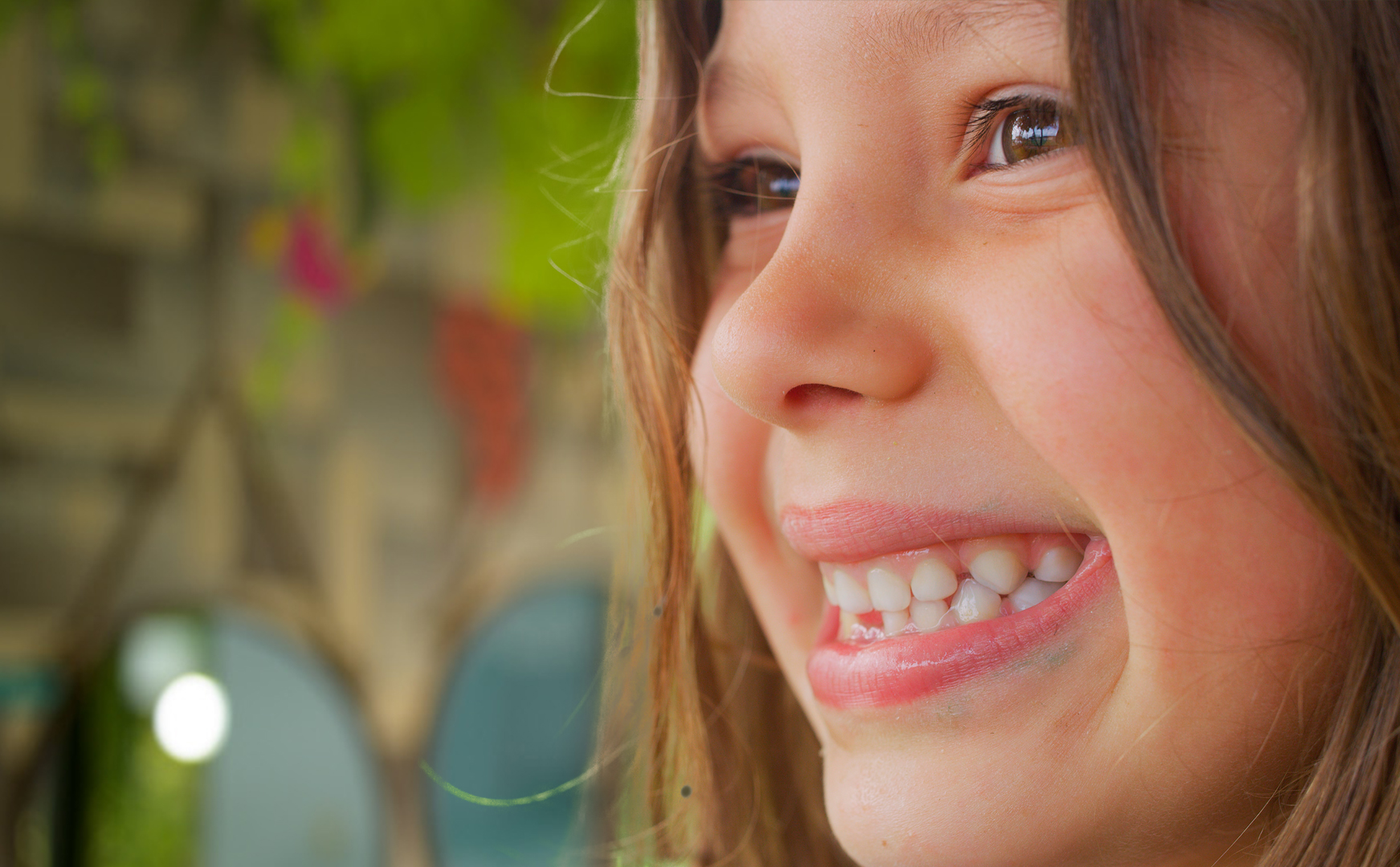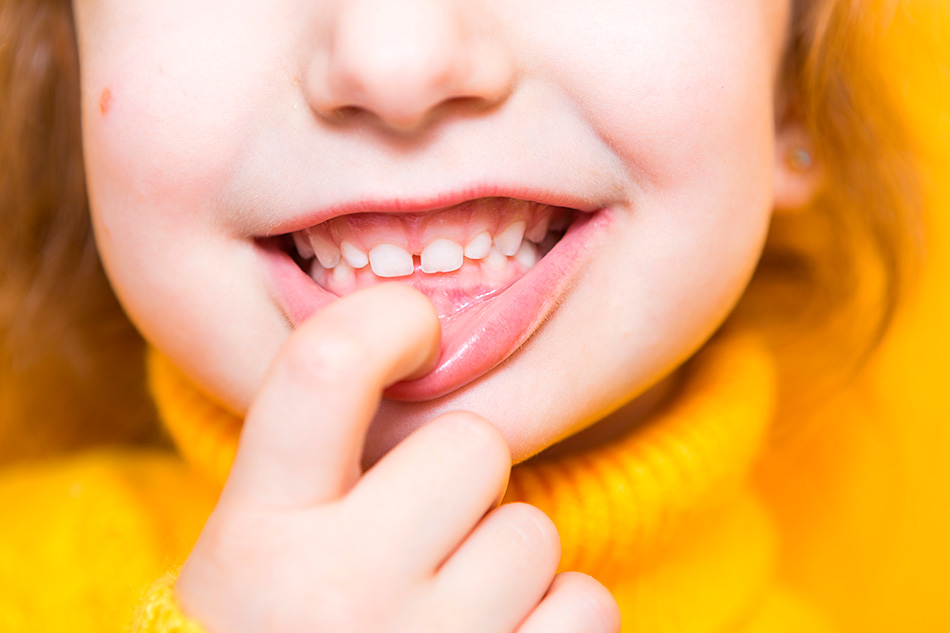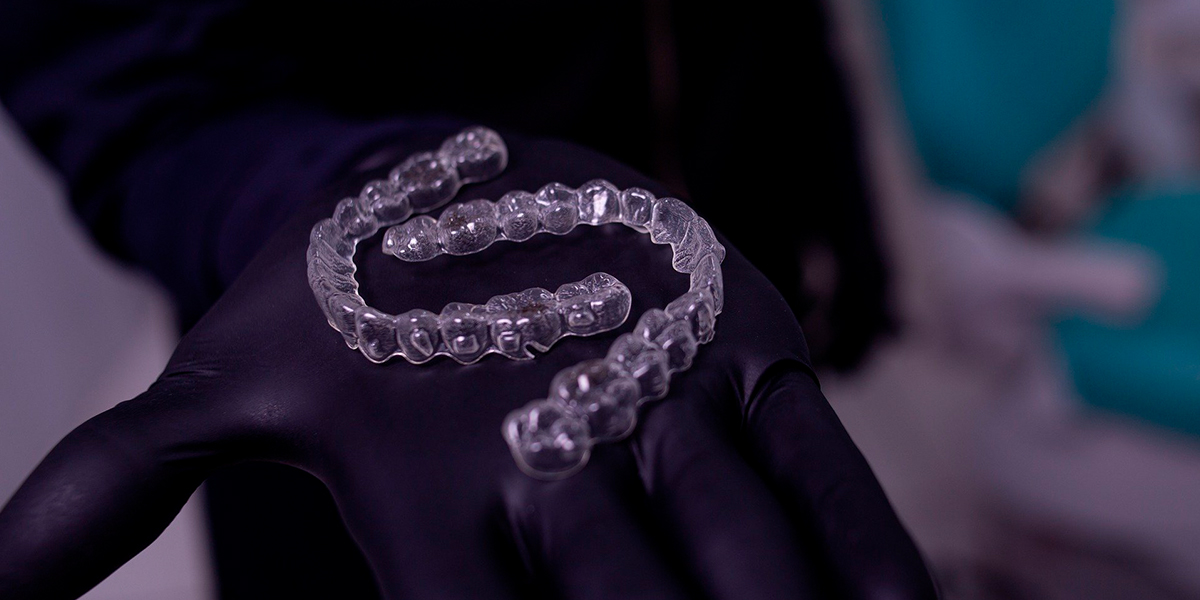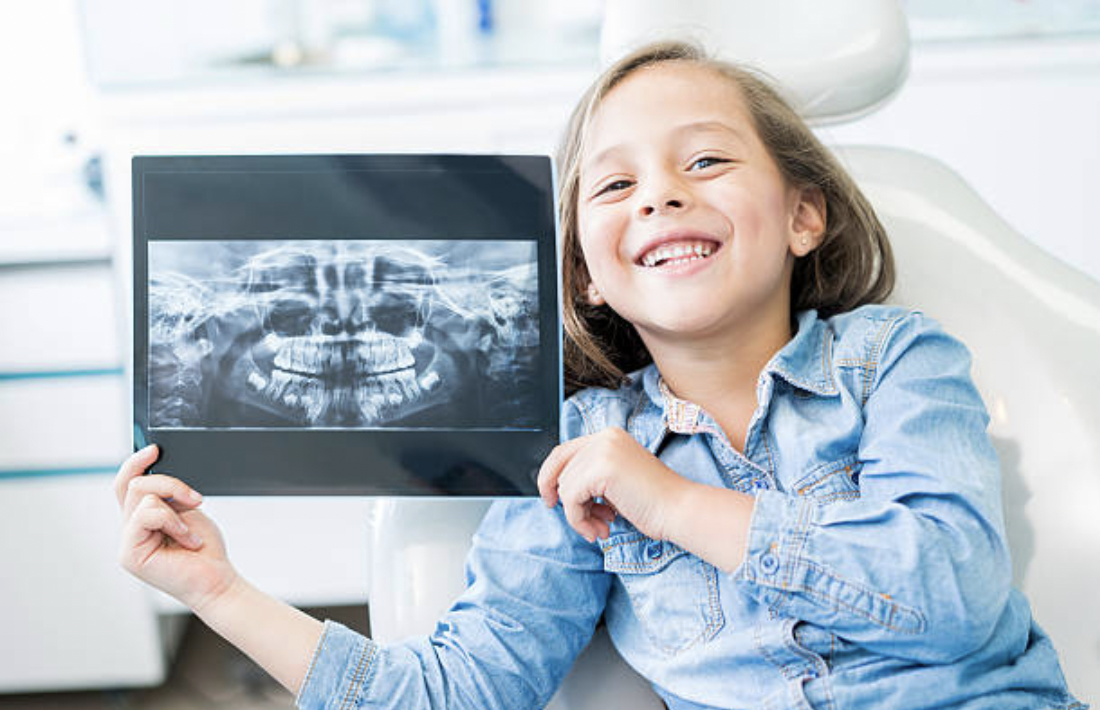The dental crossbite in children is an alteration in the relation of the teeth when biting, thus preventing the child from having a correct occlusion. This disorder can cause pain in the temporomandibular joint, asymmetric development, language problems and other issues.
Since It is a fairly common pathology that occurs during childhood, in the following article, we will explain what are the main causes of the dental crossbites and why they should be treated and managed as soon as possible.
What is an infantile crossbite?
Crossbite is a type of malocclusion characterized by an alteration in the bone growth of the upper jaw or mandible, which prevents a good occlusion – the way the teeth fit correctly between the upper and the lower jaw. This alteration in the bone growth can either happen due to a dental crossbite which impedes the bone from developing correctly or due to an alteration in the bone growth itself, potentially leading to a dental crossbite which affects growth development.
In the latter case, if the child is still in early ages, the bone discrepancy between the upper and lower jaw can be present without yet developing a dental crossbite. This is why an appointment with the orthodontist at age 6 is very important and highly recommended in order to make a good differential diagnosis.
Dental crossbite can develop at any age, since the dental arches are constantly growing and undergoing changes in size and morphology. However, a crossbite of skeletal origin can be diagnosed from a very early age.
Normally, children who suffer from a crossbite have a narrow or ogival palate; this is a bone structure that must be expanded. When occluding, this situation causes the teeth of the upper arch to be inside the teeth of the lower arch. However, It could also be because the palate is of normal development but the jaw has a very large dimension. Therefore, a good differential diagnosis by an expert is essential.
Types of crossbites
There are several types of crossbites in children. Depending on the area in which the oral cavity is located, we can find different classifications:
- Anterior crossbite: affects the incisors of the upper arch, that is, the front part of the mouth.
- Posterior crossbite: occurs in the premolars and molars, that is, the back part of the oral cavity.
- Unilateral crossbite: occurs only on one side of the dental arch.
- Bilateral crossbite: Both sides of the mouth are affected.
Classification of infantile crossbite according to its origin
Depending on the origin of the crossbite we can distinguish:
- Dental crossbite: the upper and lower jaw have developed correctly but the teeth are in an inappropriate position.
- Skeletal crossbite: The maxilla (upper jaw) is smaller than the mandible (lower jaw) due to its lack of proper development.
- Mixed crossbite: the teeth have not erupted correctly and consequently, the jaws have not developed proportionally.
Symptoms of infant crossbite
There are several symptoms caused by childhood crossbites, among them you can find:
- Neck and general head/facial pain.
- Disorders in the temporomandibular joint (joint which connects the lower jaw to the temporal bone).
- Tinnitus (sensation of ringing in the ears).
- Bruxism (disorder consisting of grinding the teeth unconsciously).
- Difficulty in carrying out good oral hygiene due to inadequate dental position, which can cause cavities or periodontal diseases (related to the gums).
What are the causes of crossbite in children?
Infant crossbite can be caused by a number of factors, including:
- Skeletal problem: consequence of an alteration during the growth stage which has a direct impact in the development of the maxillary bone, which ends up being narrower.
- Genetic factor: the hereditary component is especially important in human development.
- Bad habits: such as prolonged use of a pacifier, thumb sucking, biting of objects, malpositioning of the tongue (which can lead to atypical swallowing) or breathing through the mouth, among others.
- Dental problems: the lack of dental contact between the teeth of the upper and lower jaw or a late eruption of the permanent teeth.
What consequences could develop from a crossbite at an early age?
If this type of malocclusion is not corrected in time, it can cause various problems:
- Bone development: causing asymmetric growth of the jaws and deviation towards one side of the mandible, leading to a scenario that lacks a correct and balanced occlusion.
- Dental problems: such as bruxism, tooth wear, fractures and dental crowding.
- Inadequate Oral Hygiene.
- Aesthetic repercussions: asymmetric jaw growth will affect the child’s smile and facial aesthetics.
How is a crossbite corrected in children?
The chosen treatment to correct a childhood crossbite will depend on several factors. The cause, the degree of the malocclusion and the age of the patient. Therefore, it is necessary to go to a dentist as soon as possible to determine the origin and carry out the appropriate treatment according to the diagnosis.
Treating crossbites in children as soon as they’re detected is essential, as they are in the development phase, where their muscles, bones and different tissues are growing. Treating them at this phase makes it easier to correct the malocclusion, favoring their correct growth.
The treatment for an infant crossbite with a skeletal component usually begins with the use of a rapid palatal expander (RPE). It is one of the most common devices in interceptive orthodontics (a type of children’s orthopedics which is used for the positive development of bone structures, more specifically, it acts on the opening of sutures which are not fused yet but where the bone dimensions are still smaller than needed for that patient).
The rapid palate expander is a fixed orthopedic appliance. Its main purpose is to progressively widen the palate until it reaches the desired width. This treatment is usually performed between the ages of 6 and 12, as the palatal suture (in the maxilla) fuses around the age of 13.
These parameters apply on a general basis but every individual is unique and consequently, every patient should have his/her diagnosis done based on his/her specific times of growth and development. It must be taken into account that the sooner the reatment is performed, the greater the orthopedic effect (on the bones) and the later it is performed, the greater the undesirable dental effect (depending on the cause of the crossbite, of course).
What would happen if the crossbite is not treated on time?
If the crossbite has a skeletal component and it is not treated with orthopedic treatment, as the child grows up, the suture will solidify. The next step would be either to continue argeting the origin of the crossbite, by anchoring an appliance with mini screws to the palate, provoking the palatal suture to open and separate or to undergo surgical procedures that would reopen the palatal suture right away.
If these options are rejected by the patient, then the other option would be not to correct but rather to camouflage the malocclusion with dental movements (whenever it is possible). However, that kind of treatment would not target the correction of the origin of the crossbite, per se.
This is mainly why it is important that children attend periodic orthodontic reviews. To make an accurate diagnosis is very important but to do it on time is even much more important for the patient.
The orthodontist is in charge of carrying out the appropriate treatment in restoring the correct masticatory functions. If the child has any bad habits such as thumb sucking, nail biting etc. the orthodontist will help the child understand the importance of abandoning them.
Bibliography
- Castañer Peiro A. (2006): “Ortodoncia interceptiva: Necesidad de diagnóstico y tratamiento temprano en las mordidas cruzadas transversales”. Medicina Oral, Patología Oral y Cirugía Bucal (Internet), 11 (2). Pp. 210-214.
- Masood M., Masood Y. y Newton T. (2014): “Cross-bite and oral health related quality of life in Young people”. Journal of Dentistry 42 (3). Pp. 249-255.
- Mato González A., Pérez Mendoza L., Rodríguez Fuego M. C. y González Gutiérrez A. (2016): “Mordida cruzada anterior y tratamiento en la atención primaria”. Revista de Ciencias Médicas de Pinar del río 20 (4).






